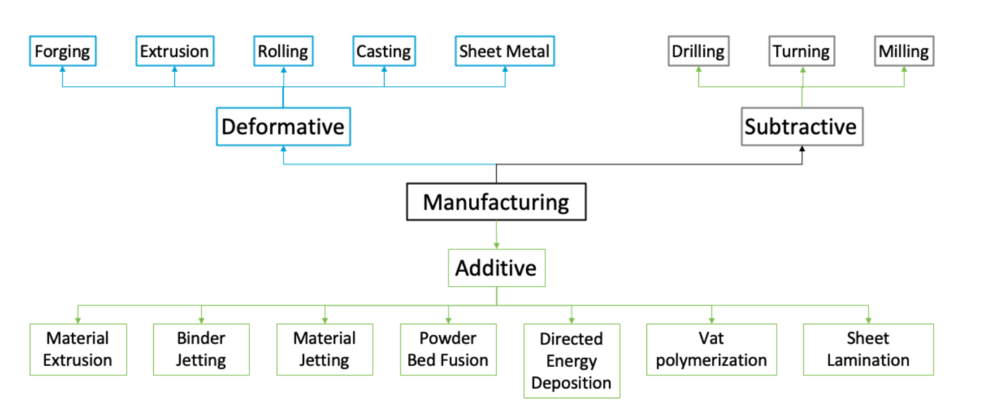Support structures have been there for us since the beginning of AM, anchoring us to a firm foundation and taking the heat when things get intense. But they also bring with them baggage that is now holding us back, blocking channels and taking up valuable time and materials. Is it time to break free?
Read MoreDuring my 17-year career in manufacturing, I’ve experienced many technology adoption journeys, giving me a front row seat to the good, the bad, and the ugly. Each of them came with their own interesting technical and business lessons, but they all had one common denominator: People. I am often asked, “Why is Additive Manufacturing (AM) not being adopted faster?”
Read MoreLike many manufactured products, multiple processes and inspections are required to make Metal Additive Manufactured (MAM) parts. Not only are these different operations necessary for the part to have the desired geometry and properties, but the order in which the different operations are performed are equally important.
Read More“Knowledge is power,” the infamous quote attributed to Sir Francis Bacon comes to mind when reflecting on Industry 4.0 and the promise of more knowledge and insights. However, while Additive Manufacturing (AM) is creating piles and piles of data, how much insight and actionable knowledge is actually available?
Read Moreby Laura Ely, The Barnes Global Advisors
My kids love creating structures with Legos, Duplos, and boxes. Some days they build big houses with simple walls and others detailed spaceships with intricate features. Their block choice dictates the structure they build, or they pick the blocks based on the resolution they desire.
Read Moreby John Barnes, The Barnes Global Advisors
A data-driven approach to laser powder bed fusion reveals how companies can get cost out of parts and match productivity to customer requirements. Part Three of a three-part series.
Read Moreby Kirk Rogers and John Barnes, The Barnes Global Advisors
In our previous article, we covered design considerations for Binder Jet Processing (BJP) by highlighting the critical process steps which also form design constraints. In this article, we take a deeper dive into the details of de-binding and sintering. Part Three of a four-part series.
Read Moreby Kirk Rogers and John Barnes, The Barnes Global Advisors
In our previous article we covered considerations on the overall approach for designing for the process depending on the flexibility the designer has with the part. In this article, we’re honing in specifically on designing for BJP considerations by highlighting some of the critical process steps which form design constraints. Part Two of a four-part series.
Read Moreby John Barnes, The Barnes Global Advisors
There is a difference between the effective print speed and the actual cost to produce the component with AM. John Barnes compares binder jet processing with powder bed fusion for metal parts. Part Two of a three-part series.
Read Moreby Tim Simpson and Chelsea Cummings, The Barnes Global Advisors
What images pop into your mind when we use the term “DfAM”? Perhaps you see beautiful topology optimized structures, organically inspired bird bone constructs, and perfectly latticed shapes? Part One of a four-part series.
Read Moreby John Barnes, The Barnes Global Advisors
When it comes to laser-based powder bed fusion, more lasers do not always lead to greater productivity. Considerations for multi-laser 3D printing. Part One of a three-part series.
Read Moreby Kirk Rogers, The Barnes Global Advisors
While a bit more shut in than normal this spring, I enjoyed a number of books that have been waiting for me in the nightstand for some time. It gave me some time to consider how creative you have to be to coordinate real world problems and absurd scientific solutions as well as allowed me to find a nice way to refresh some manufacturing fundaments and perhaps learn some new ideas that I can apply with our clients. It’s also got me thinking about Manufacturing and what that means.
Read Moreby Kevin Slattery
As highlighted by being the theme of America Makes’ recent TRX, the topics of Certification and Qualification will feature prominently in the future of Additive Manufacturing (AM). This is because AM is being developed in a wide range of industries to produce products with superior performance (weight, efficiency, cost, etc.), with the same reliability that conventional manufacturing has delivered for their customers.
Read MoreAs an energy technology company that operates in more than 120 countries, Baker Hughes is at the forefront of adopting new technologies. The company works diligently to develop innovative solutions to complex energy challenges.
Read MoreThe sharp uptick in additive manufacturing interest is leading many newcomers into the world of AM. For those of us who have spent decades in the field, we do not envy those who are just entering and finding themselves awash with acronyms, classifications, and nebulous definitions.
Read More


